 The Marantz Model 10 integrated amplifier (US $15,000/CA$20,000/£11,999/€14,499) is a reference-level component that combines opulent aesthetics with exceptional performance. It demonstrates what a great engineering team can achieve when not hindered by cost constraints. In his September 2025 review of the Model 10 on SoundStage! Ultra, Jason Thorpe characterizes the look of the Model 10 as “stunning in a manner that manages to be understated and totally over the top at the same time.” He writes that its sound is “commensurate with its price: fantastic bass, wonderful retrieval of detail, and a clear, grain-free top end.”
The Marantz Model 10 integrated amplifier (US $15,000/CA$20,000/£11,999/€14,499) is a reference-level component that combines opulent aesthetics with exceptional performance. It demonstrates what a great engineering team can achieve when not hindered by cost constraints. In his September 2025 review of the Model 10 on SoundStage! Ultra, Jason Thorpe characterizes the look of the Model 10 as “stunning in a manner that manages to be understated and totally over the top at the same time.” He writes that its sound is “commensurate with its price: fantastic bass, wonderful retrieval of detail, and a clear, grain-free top end.”
Built in Marantz’s Shirakawa facility, in Japan, the Model 10 is the only amplifier in the company’s new 10 Series, which also includes the Link 10n streaming preamplifier and SACD 10 SACD/CD player. The 10 Series was conceived as a cost-no-object line of components, Jason writes, one designed from the ground up to showcase the company’s engineering prowess—and it does.
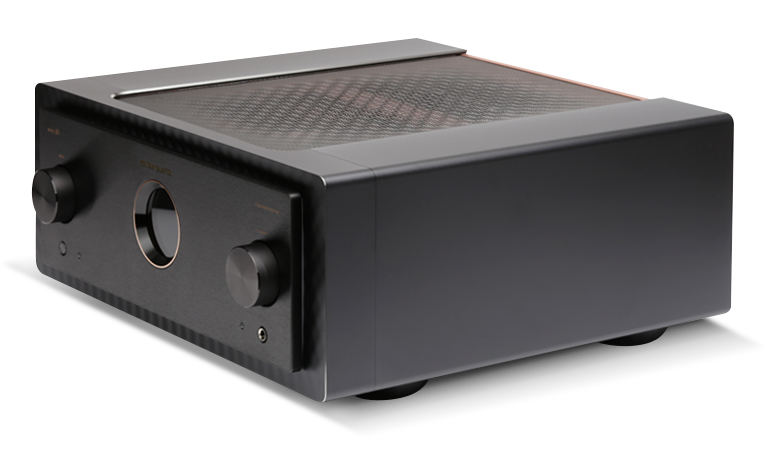
The Model 10 measures 17.3″W × 7.6″H × 18.6″D and, with its thick aluminum panels, copper-plated chassis, and heavily shielded toroidal transformer, weighs 74 pounds. Onboard interior and exterior lighting further enhances its impressive appearance. It is available in two colors: Marantz Black and Marantz Champagne.
At the heart of the Model 10 are two class-D Eigentakt amplifier modules, licensed from Denmark’s Purifi Audio and manufactured in-house. It is rated at 250Wpc into 8 ohms or 500Wpc into 4 ohms. Jason’s review sample handily surpassed these figures when measured in the SoundStage! Audio-Electronics Lab, delivering 340Wpc and 650Wpc into 8-ohm and 4-ohm loads. It also proved stable with 2-ohm loads. For an integrated amplifier, the Model 10 is certainly powerful. It operates on a fully balanced audio signal from input to output, automatically converting single-ended input into a balanced signal.
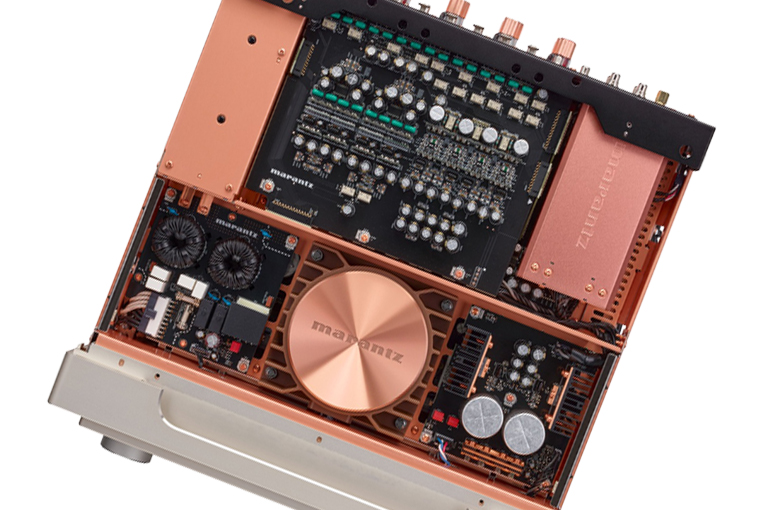
Connectivity includes two sets each of balanced (XLR) and single-ended (RCA) inputs, a tape-monitor loop, balanced (XLR) and single-ended (RCA) pre-outs and power-amp inputs, and a built-in moving-magnet/moving-coil phono stage via RCA inputs. Tone adjustment can be made through the remote control, but Jason found that the Direct mode, which bypasses tone controls entirely, produces a more transparent sound. A headphone output is available, but Jason did not evaluate it during his audition of the amplifier. Diego Estan, our measurements specialist, did test it in the lab, however, and included the results with the other measurements.
A button-dense remote control that can also operate a Marantz SACD player and streaming preamplifier accompanies the Model 10. Jason Thorpe found this remote to be overly crowded and difficult to read, noting, “After I’d set up the display, phono section, and tone bypass—which required only five or six of the approximately 45 buttons on the remote—I only used the volume and input buttons. And each time I picked up the remote I had to visually hunt for those buttons, as the remote isn’t illuminated, the writing is faint, and they’re indistinguishable by feel.” He did like the Model 10’s volume and input-select dials, writing that they “simply nail the balance between resistance, precision, and tactile feedback.”
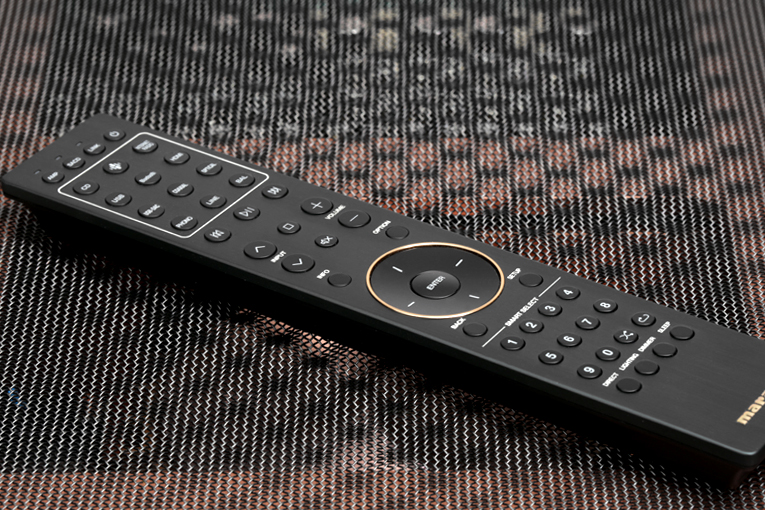
The Model 10’s gain with balanced inputs, Jason’s preferred connection, was lower than he expected. He writes, “At my usual listening level, which isn’t that loud, I generally kept the level at 70/100, and spirited sessions necessitated bumping that up to 75. . . . Decreasing the setting to 50 resulted in a volume level far too low to be of any use.” Our measurements do show that the Model 10’s gain with the balanced inputs is 6dB lower than with the single-ended inputs. But since no listener is likely to find this amp deficient in gain, regardless of the mode of input, “this behavior isn’t an issue,” Jason assures us. “It’s just a bit strange.”
In his audition, Jason used a pair of Bowers & Wilkins 805 D4 Signature loudspeakers connected by a set of Siltech Royal Single Crown speaker cables. He used two vinyl setups. One was a VPI Prime Signature equipped with a DS Audio DS 003 optical cartridge and an EMM Labs DS-EQ1 optical phono stage. The other was a European Audio Team Fortissimo S tested with two moving-coil cartridges: the Ortofon MC X40 and the Goldring Ethos SE. Unlike the DS 003, which requires a special phono stage, the Ortofon and Goldring could use the Model 10’s built-in phono stage. For comparison, however, Jason also paired them with an external phono stage, the Mola Mola Lupe.
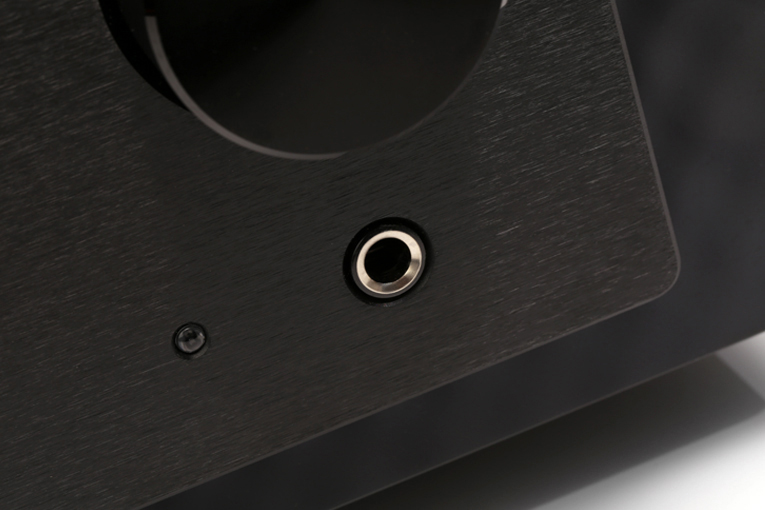
The Model 10 replaced a Simaudio 740P preamplifier (discontinued) and a Hegel Music Systems H30A power amp (current) in Jason’s system, a setup costing about twice as much as the Model 10.
While listening to Pink Floyd’s The Wall, Jason felt that the Model 10’s ability to reveal ambient cues and background details was among the best he had heard. It sounded like it was “amplifying the music in a completely unedited manner,” he writes. He was particularly impressed with the amplifier’s reproduction of the midrange, which “presented a clear, unobstructed view of the musical event.” Jason observed that the Model 10 added no colorations and therefore he decided not to “monkey with the tone controls” needlessly.
On Talk Talk’s Laughing Stock, the amplifier’s control and articulation at low frequencies made Jason do a double take. He writes, “There’s some seriously low bass lurking on this LP, and as ‘After the Flood’ ramped up, the 805s launched out low notes that you wouldn’t think possible coming from such small speakers.” The Model 10’s proficiency with bass was demonstrated once again in “Bargain” from The Who’s Who’s Next. This time it was the rapid start-stop transitions in the bass that caught Jason’s attention. “I felt Moon’s kick drum in my gut,” he writes, “the Model 10 projecting it outward with almost tactile force.”
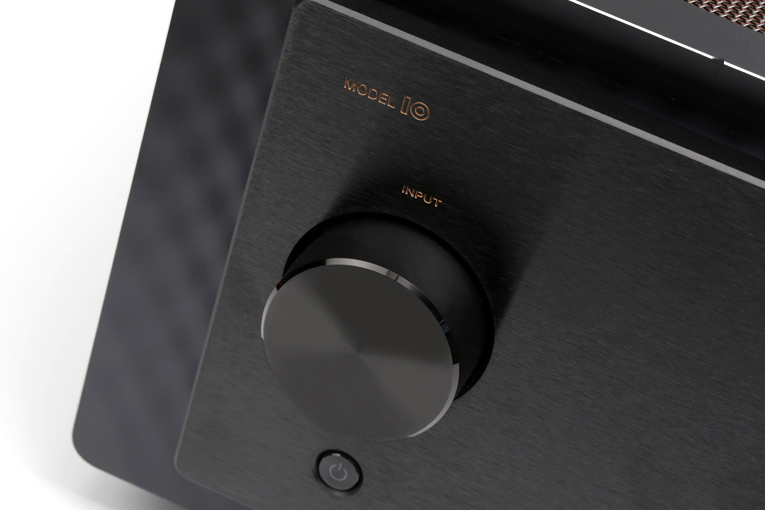
Comparing the Model 10 to his Simaudio/Hegel setup, Jason found little to criticize: “The only attribute where the Model 10 couldn’t quite keep up with my Simaudio/Hegel combo was in harmonic depth. . . . Every once in a while, I’d look up from whatever I was doing and note that some instruments weren’t as harmonically rich as I had heard them sound through my reference setup.” He gives Sonny Rollins’s Original Music from the Score “Alfie” as an example:
This is a rich chocolate cake of a record, jam-packed with marmalade overtones. I found my attention mostly captured by Frankie Dunlop’s ride cymbal, which is a constant throughout most of the album. That ride was beautifully presented—crisp and free of grain, full of delicacy and shimmer. But despite the cleanliness of that ride cymbal—or perhaps because of it—I wasn’t as drawn to the other stars in this recording. Rollins’s sax seemed a touch reticent, a bit further back in the mix than I’m used to. Same with Kenny Burrell’s guitar, which was missing just the smallest amount of the sparkle that I know it has.
The Model 10’s built-in phono stage is good, Jason found, though not quite on par with the quality of the other parts of the amp. And it couldn’t rise to the quality standard set by the Mola Mola Lupe, which he considers one of the finest standalone phono stages he’s had in his system. It is also a highly configurable phono stage, with numerous settings, all conveniently accessible through its controller app. The Lupe’s stellar performance and flexibility are reflected in its price: US$11,140, £7299, €7990, nearly the cost of the Model 10. (Jason’s review of the Lupe appeared on SoundStage! Ultra on October 1.)
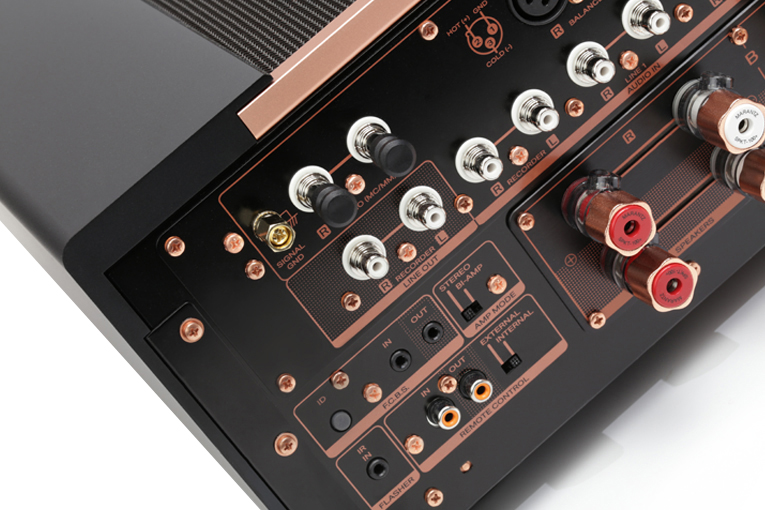
Listening to the Model 10 when paired with the EAT Fortissimo S turntable and Jo N°8 cartridge, Jason was impressed by the phono stage’s “resolution of detail,” “reproduction of dynamics,” and “conveyance of rhythm.” He particularly liked the phono stage’s high-frequency reproduction, describing it as “somewhat laid-back” and “slightly sweet and not the least bit grainy.”
Where the Model 10’s phono stage fell short, Jason felt, was in “that ethereal sense of depth and layering that only the best phono stages can deliver.” He illustrates this with the 2018 remixed version of Pink Floyd’s Animals (Pink Floyd Records PFRLP28), a recording that “just drips with ambience and hallucinogenic fever.” Midway through, the bark of a dog erupts, which the Model 10’s phono stage reproduced “with a good sense of wraparound.” But it couldn’t match the Mola Mola’s “miles-deep-yet-still-behind-you presentation.”
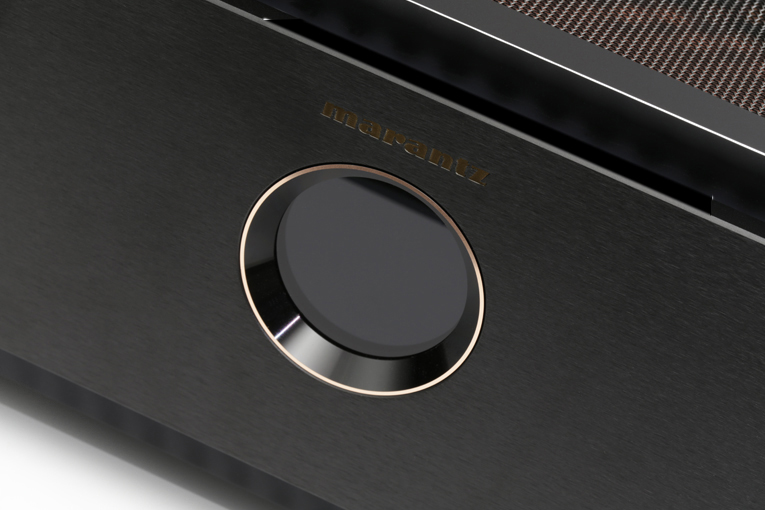
Despite these few quibbles, Jason concludes his review with high praise: “you could build a magnificent system around the Model 10.” He commends both its appearance and overall sound quality, declaring it a highly recommended winner. Following Jason’s review, the Model 10 earned a Reviewers’ Choice award for its combination of value and performance. This month it receives a Recommended Reference Component award for its performance.
Manufacturer contact information:
Marantz America
5541 Fermi Court
Carlsbad, CA 92008 USA
Phone: 1-800-654-6633
Website: www.marantz.com